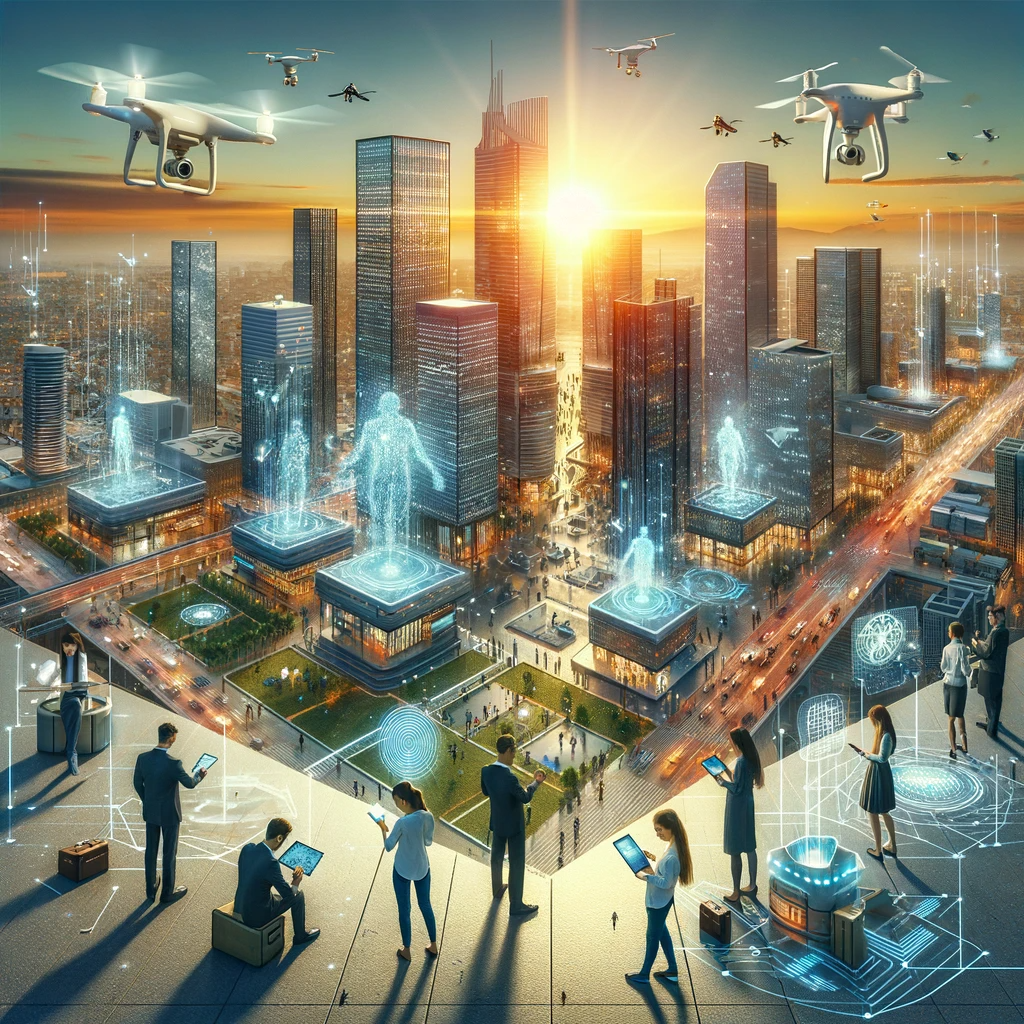Address
304 North Cardinal St.
Dorchester Center, MA 02124
Work Hours
Monday to Friday: 7AM - 7PM
Weekend: 10AM - 5PM

Are we on the cusp of a productivity renaissance? As AI’s generative abilities become increasingly integrated into various sectors, their impact on productivity is becoming undeniable. This article delves into AI’s role in the current economic cycle, drawing parallels with historical patterns of innovation and productivity growth.
Nikolai Kondratieff’s long-term economic cycles, known as Kondratieff Waves, underscore the rhythmic patterns of growth and stagnation in the global economy, heavily influenced by technological innovations. These waves, typically lasting 40 to 60 years, illustrate how significant technological breakthroughs initially permeate through various sectors, spurring periods of rapid growth. The end of a Kondratieff wave is marked when these technologies have been fully integrated and exploited across all sectors, leading to a plateau in growth and paving the way for the next wave of innovation.
As we navigate the latest Kondratieff wave, characterized by the emergence and widespread adoption of artificial intelligence (AI), it’s crucial to understand how these patterns have historically played out and what they can tell us about our future.
Figure 1: Kondratieff wave and Technological Innovations
Source: Navigating the Business Cycle (Book)
Joseph Schumpeter, building on Kondratieff’s ideas, introduced the concept of ‘creative destruction,’ which posits that new innovations catalyze the decline of outdated industries. This process clears the way for fresh growth and the emergence of new sectors, highlighting the cyclical nature of technological and economic development. This theory is particularly relevant today as we consider the transformative impact of AI, which has the potential to reshape industries, economies, and societies.
In the current Kondratieff Wave, the transformative potential of AI in reshaping our economic landscape can be compared to the monumental impacts of the steam engine and electric power in their respective eras. The steam engine, a pivotal innovation during the Industrial Revolution, revolutionized manual labor, leading to a surge in productivity and the birth of new industries. Similarly, the advent of electric power marked a significant turning point, fundamentally changing factory operations and enabling mass production, which led to a dramatic increase in economic activity.
Just as these technologies were catalysts for major shifts, the integration of AI into our existing digital infrastructure is set to bring about swift and sweeping changes across multiple sectors. However, a key difference lies in the speed of adoption and impact. The steam engine and electric power, while revolutionary, took decades to fully permeate through various industries and achieve their full potential. AI, on the other hand, benefits from an already established digital ecosystem, enabling a much faster adoption and realization of productivity gains. This rapid integration suggests that AI might not face the same latency between innovation and application as seen with steam and electric power.
Thus, AI stands at the forefront of a paradigm shift in productivity and economic contribution, potentially mirroring the effects of steam and electricity but at an accelerated pace. The groundwork laid by the digital revolution before the rise of AI paves the way for a rapid rollout of AI capabilities. This could lead to an accelerated J-curve effect in productivity growth, where the immediate and profound impact of AI technologies drastically shortens the time between innovation and its widespread application.
Traditional adoption curves are elongated over years, even decades, but AI’s integration into existing digital infrastructures promises a quicker realization of its benefits. This rapid integration into the workflow could lead to earlier productivity gains, challenging the previous notion of the “Solow paradox,” where the benefits of new technology are not immediately apparent in productivity statistics.
Erik Brynjolfsson’s research points to AI as a catalyst for an unprecedented leap in productivity. His findings suggest that generative AI, much like the steam engine and electric power in their times, could double productivity growth rates from the Congressional Budget Office’s projection of 1.4% to around 3%.
In his study, Erik Brynjolfsson closely examined the impact of deploying a Large Language Model (LLM) tool for customer service. This introduction led to a significant improvement in efficiency, with an average productivity increase of approximately 14% observed within a few months. Notably, the impact was most pronounced among the less experienced agents, who experienced a remarkable 34% gain in productivity, a figure substantially higher than that of their more seasoned counterparts.
The integration of AI has the potential to generate considerable economic growth, with productivity gains likely to be seen across a wide array of tasks in various sectors. However, this growth may not be without its challenges. As with the introduction of steam power and electrification, which initially led to job displacement before creating new employment opportunities, AI is expected to disrupt the current job market. The transition could lead to job dislocation before new types of jobs are created, necessitating a re-skilling of the workforce.
The narrative around AI often gravitates towards the concept of job displacement, and rightfully so. AI’s integration into the workforce is a double-edged sword; while it can potentially displace certain job categories, it also has the capacity to create new roles and industries. The nature of job creation and destruction is complex, but the key lies in the transformative evolution within companies. As businesses adapt to incorporate AI, new skills and positions emerge, necessitating a shift in the workforce’s competencies. In the long term, AI could lead to a net gain in employment by spawning industries and services currently unimaginable, provided the transition is managed with foresight and adaptability.
To discuss business ventures or partnership opportunities, please direct your inquiries to Rodrigo Munhoz, CFA, at contact@rmzinvesting.com.